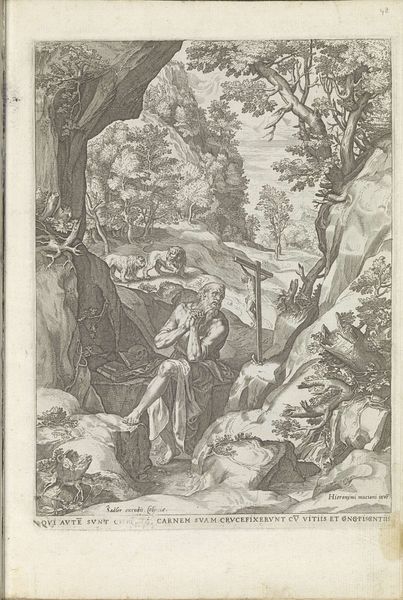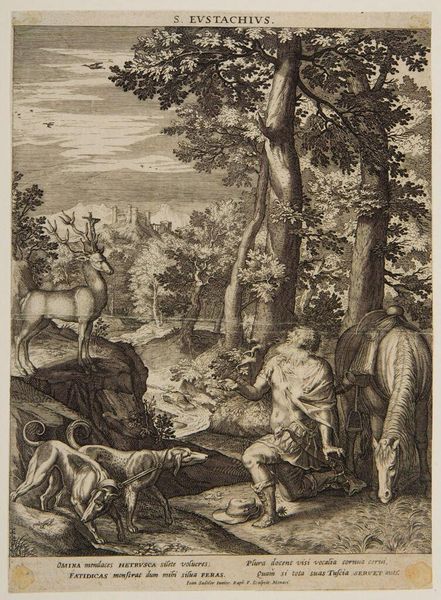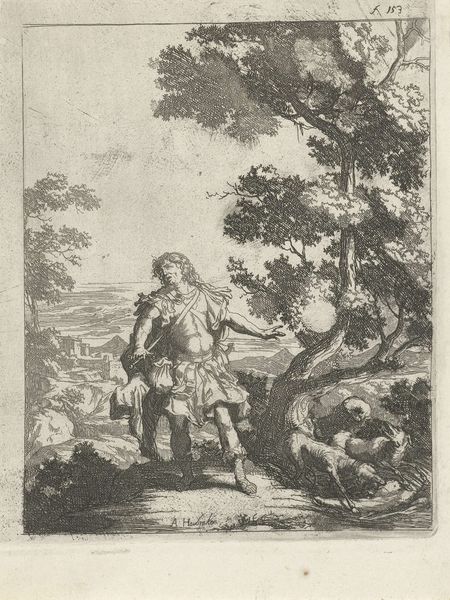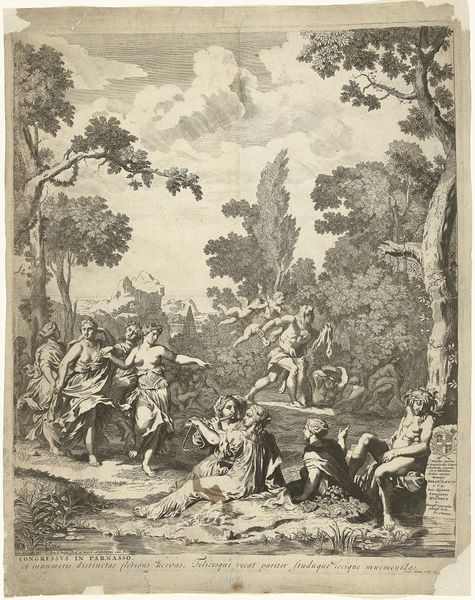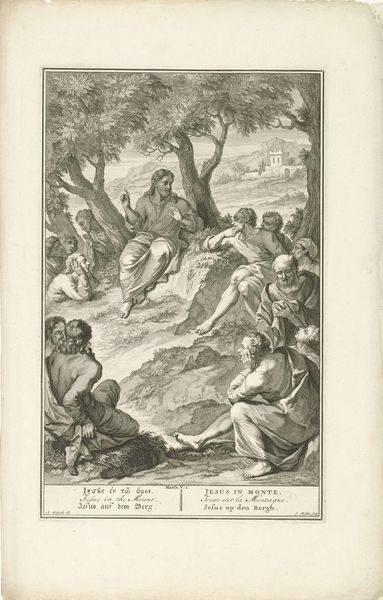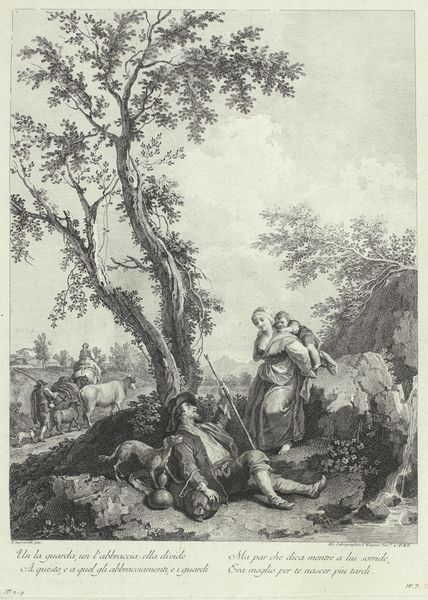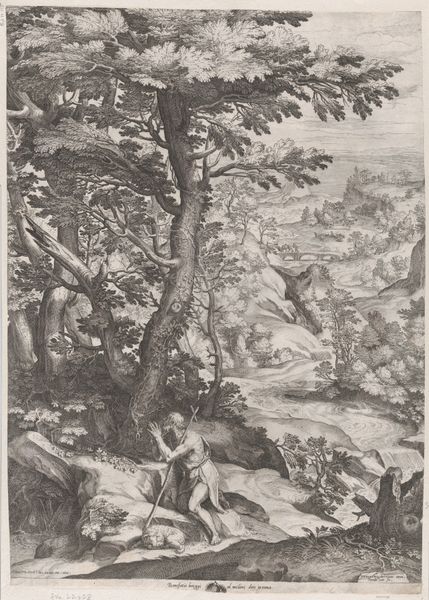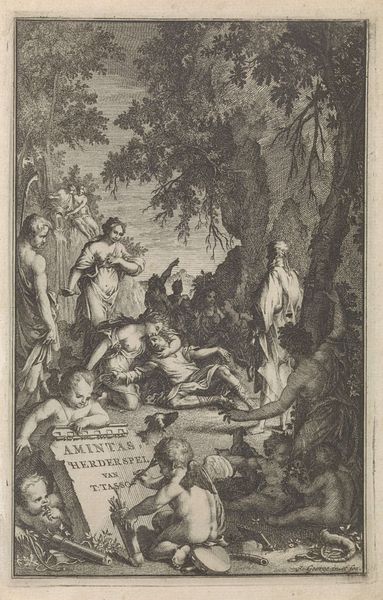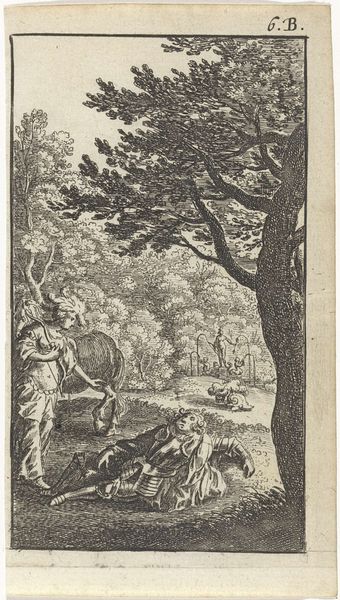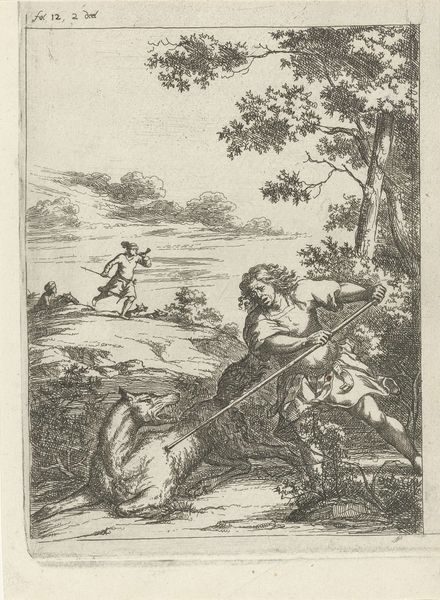
drawing, print, engraving
#
drawing
# print
#
landscape
#
figuration
#
northern-renaissance
#
engraving
Dimensions: height 262 mm, width 192 mm
Copyright: Rijks Museum: Open Domain
Editor: Here we have "Landscape with Saint John the Baptist," a drawing or print, likely an engraving, made between 1560 and 1600 by an anonymous artist. The intricate details of the landscape and the figure are quite compelling. How would you interpret this work, thinking about the artistic decisions made? Curator: Considering it's an engraving, the lines define not just form but also texture. Note the contrast between the dense foliage and the open landscape beyond. It reflects the labor-intensive process of engraving and how the artist used their tools. This detailed environment situates John the Baptist in a very particular, almost commercial context, almost like he is one of the resources of the place. What about the act of producing it for distribution, impacting our understanding? Editor: That's interesting. The landscape does feel almost staged, a product. The printmaking process itself – the act of reproduction – gives a different dimension. I didn't think about how that process connects to a broader market or viewership. Curator: Exactly. Engravings like these were commodities, intended for circulation, for instruction and pleasure. What materials would be used, what would people be able to get to view it? The religious narrative becomes something available for consumption and study within domestic life, made more mundane. The very act of printing democratizes and changes religious representation. Does this complicate your initial reading? Editor: It does. I was initially drawn to the serene religious aspect, but now I'm also seeing how the making and distribution transform the message into something tied to broader cultural and economic currents. Curator: Precisely! The landscape, Saint John – it's all brought to you, mediated by the engraver's skill, labor, and the networks of exchange of the era. And made easily more widely accessible by print. Editor: I now recognize how analyzing the means of production changes the entire piece. Curator: Indeed, and that recognition expands our appreciation of the artwork.
Comments
No comments
Be the first to comment and join the conversation on the ultimate creative platform.

